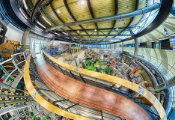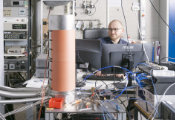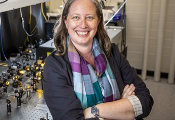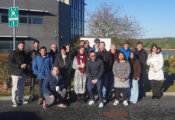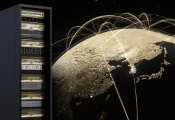Showing How Quantum Simulators Can Explore Otherwise Inaccessible Phenomena
March 31, 2025 -- Many important problems in physics, especially in fields like low-temperature physics and many-body physics, remain poorly understood because the underlying quantum mechanics is vastly complex. To address these challenges, scientists are turning to quantum simulation, a technique that allows researchers to manipulate and observe the behavior of a well-controlled quantum system in the lab, in order to learn about quantum systems that are otherwise inaccessible.
Quantum simulation was born to tackle real-world systems of interest, such as electronic materials, superconductors and complex molecules. However, physicists soon realized that quantum simulators might go beyond the mere imitation of existing systems. This opened a new research line: using quantum simulators to explore systems without real-world counterparts. Concepts that might seem to arise from science fiction, such as synthetic quantum matter, higher-dimensional spaces leading to an “augmented quantum reality”, analog black holes, suddenly became the object of scientific research.
Recently, a team of researchers led by Tobias Grass from Donostia International Physics Center in San Sebastián, with the participation of ICFO and ICREA Prof. Maciej Lewenstein, as well as researchers from ETH Zurich, Université de Lyon and TU Dortmund University, has published a Colloquium in Reviews of Modern Physics where they provide a comprehensive overview of these exotic quantum simulators. They cover various platforms, namely those based on atoms, electrons and photons, highlighting both their strengths and limitations. The paper also discusses how these platforms can enable scientists investigate phenomena across a wide range of fields, from condensed matter physics to cosmology.
According to the authors, one exciting possibility is the use of quantum simulators to create synthetic quantum matter with exotic geometries that lead to localization phenomena. In this scenario, the wavefunction of a particle or group of particles, which usually spreads out across a wide spatial area, becomes localized due to the confining geometry. This synthetic quantum matter can also host topological phases – exotic states of matter defined by entanglement patterns, rather than atomic arrangement and mobility – making it ideal for detailed study with quantum simulators. These simulators can also be used to explore cosmological models involving curved spacetimes, and even to simulate the physics of black holes, such as the Unruh effect and Hawking radiation. While these phenomena are incredibly faint and challenging to observe with astronomical techniques, quantum simulators could make them detectable in the lab.
Looking ahead, the researchers note: “Given the complexities in simulating these systems classically, quantum simulators may develop their full potential, opening the door to deep questions of quantum many-body physics. Our review shows that the basis for future explorations of the interacting world of fractals, quasicrystals, and curved and higher-dimensional spaces has been set.”

